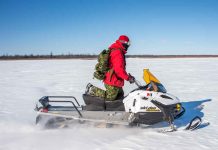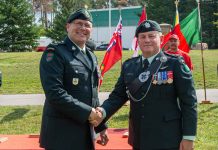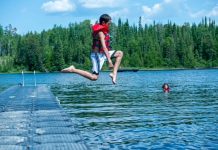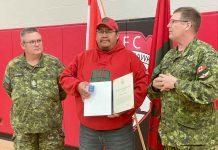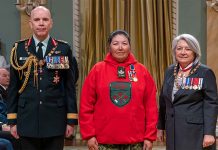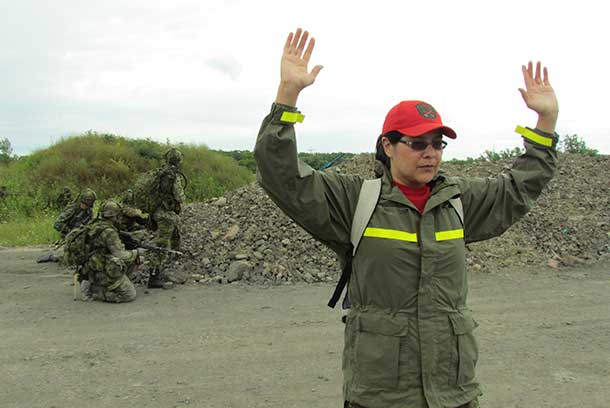
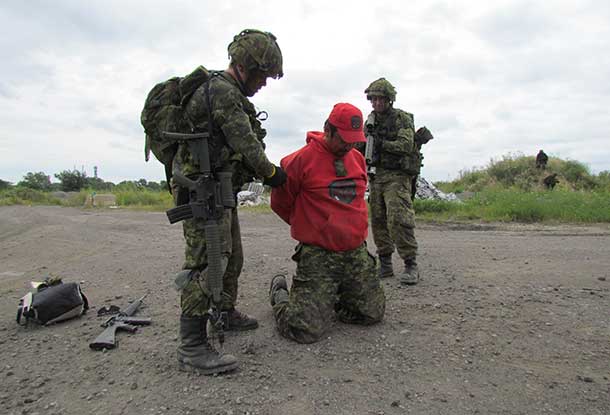
THUNDER BAY – A small group of Canadian Rangers have won praise for speaking in their native Cree and Oji-Cree languages to add a sense of realism to a major military training exercise in the Niagara Region.
The 33 Rangers, from Kashechewan, Fort Albany, and Kasabonika Lake, were part of Exercise Stalwart Guardian 2014, which saw 2,000 troops, including some from Britain and the United States, engaged in a week-long exercise during which the Welland Canal was successfully defended by Canadian soldiers from attack by a foreign country.
“To be faced by someone, a local or a prisoner, who does not peak English adds to the reality of the exercise,” said Colonel Brock Millman, commander of 31 Canadian Brigade Group, who directed the $3.3-million exercise. “The Rangers performed very well, exactly as we thought they would. They did their job well. We have nothing but high praise for them.”

Sergeant John Anderson, commander of the Canadian Ranger patrol in Kashechewan, pretended to be the vice principal of a school which had been vandalized by someone sympathetic to the force attacking the Welland Canal. He spoke in Cree only to members of the Canadian Army who visited the school to question him. They had to interview him through a Cree-speaking Ranger who was attached to them as an interpreter.
Master Corporal Leslie Anderson of Kasabonika used his native Oji-Cree language when he played the role of an “enemy” soldier taken prisoner by defending Canadian Army soldiers.
“It was a new experience for me,” he said. “It was very realistic. They did what they were supposed to do, putting me on the ground and searching me. It felt very real with all these army guys around me with their guns. It was very interesting and a lot of fun.”
Ranger Paula Nakogee of Fort Albany also played the role of a soldier taken prisoner. She stood with her hands in the air while soldiers firing blank ammunition engaged in a fire fight nearby. Some of the soldiers laughed when she took out her camera and started taking photographs with one hand while still keeping her other hand in the air. “It was exciting and very real,” she said. “I wanted some photos of it.”
The Rangers had a day off during the exercise to see the Niagara Falls and other local attractions. “I’d never seen the Falls before,” Sergeant Anderson said. “But I enjoyed this exercise more. It was fun being part of it and it was very realistic. For me, it was more exciting than seeing the Falls.”
All the Rangers were impressed by the realism of the exercise, which included troops shooting at each other in mock combat situations and moving around the Niagara Region in a variety of armoured and other military vehicles.
“I could tell when they went to the different exercise locations each day that were displaying a lot of enthusiasm for what they were doing,,” said Warrant Officer Carl Wolfe, an army instructor. “Everybody was excited and they did a great job.”

